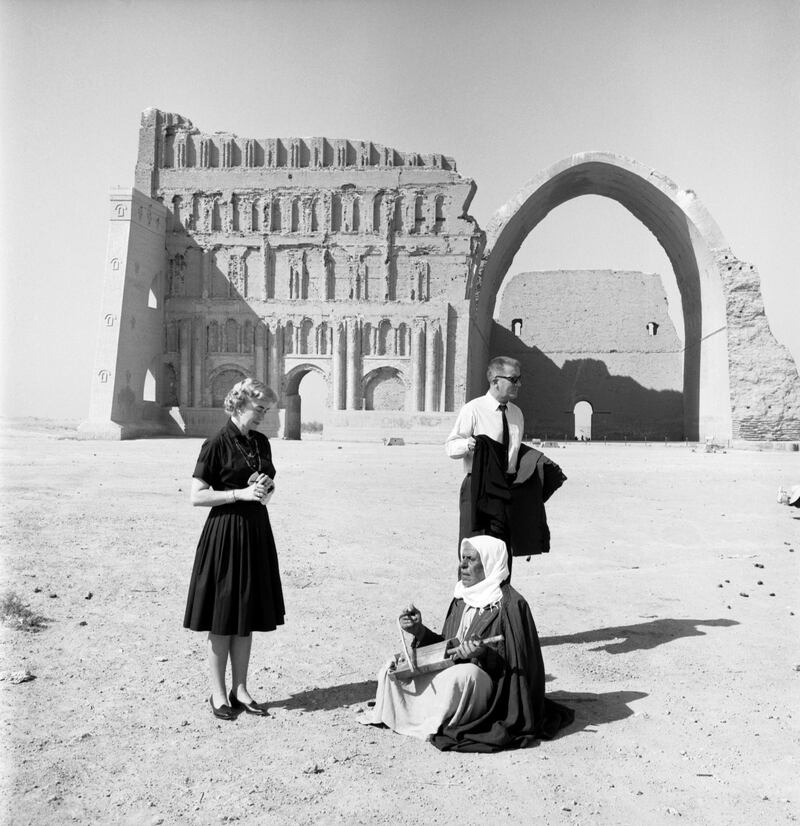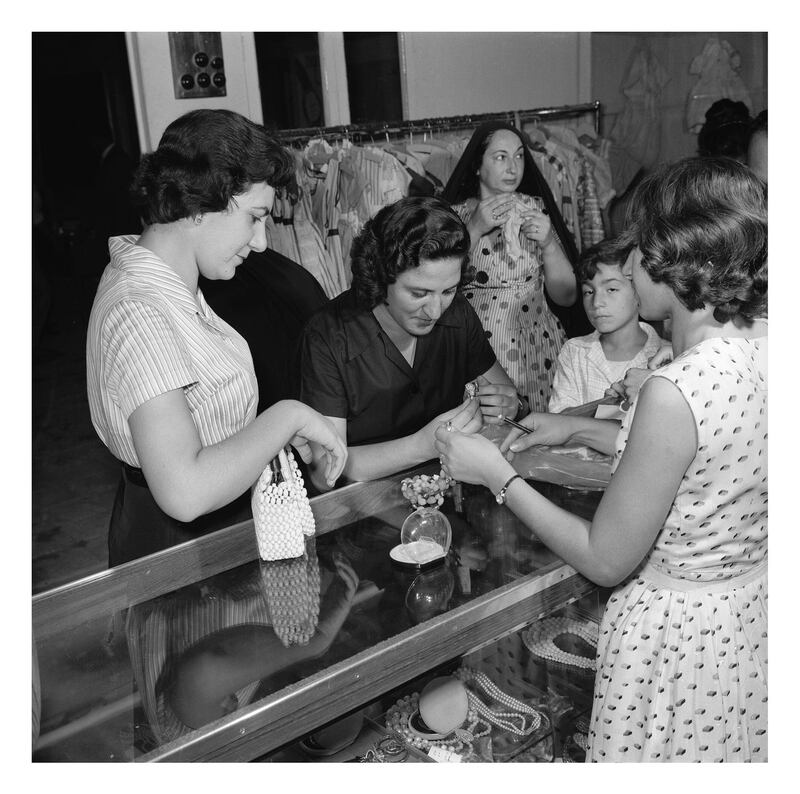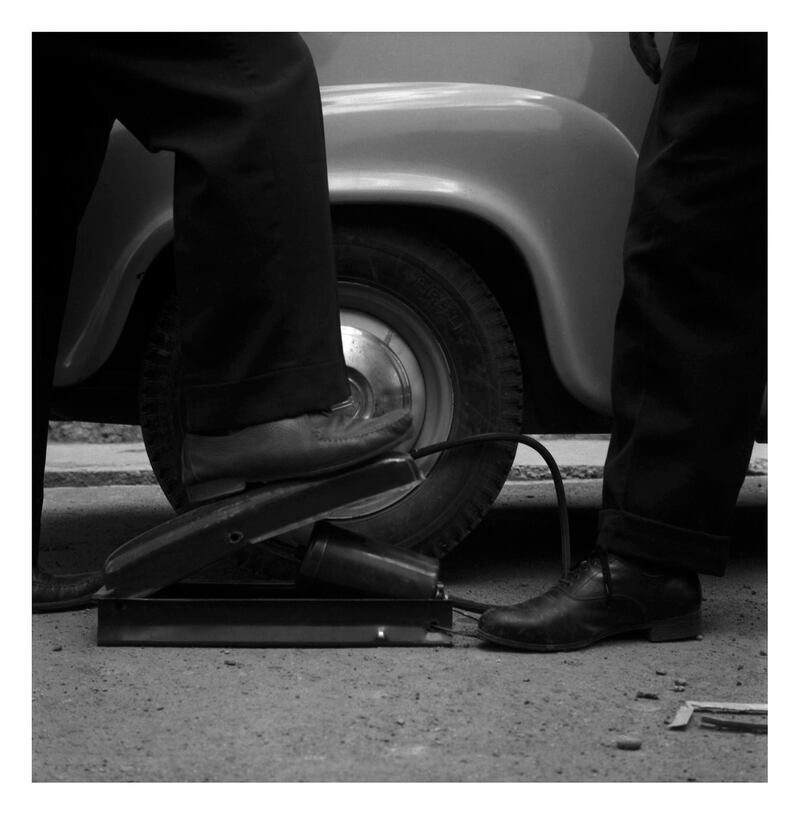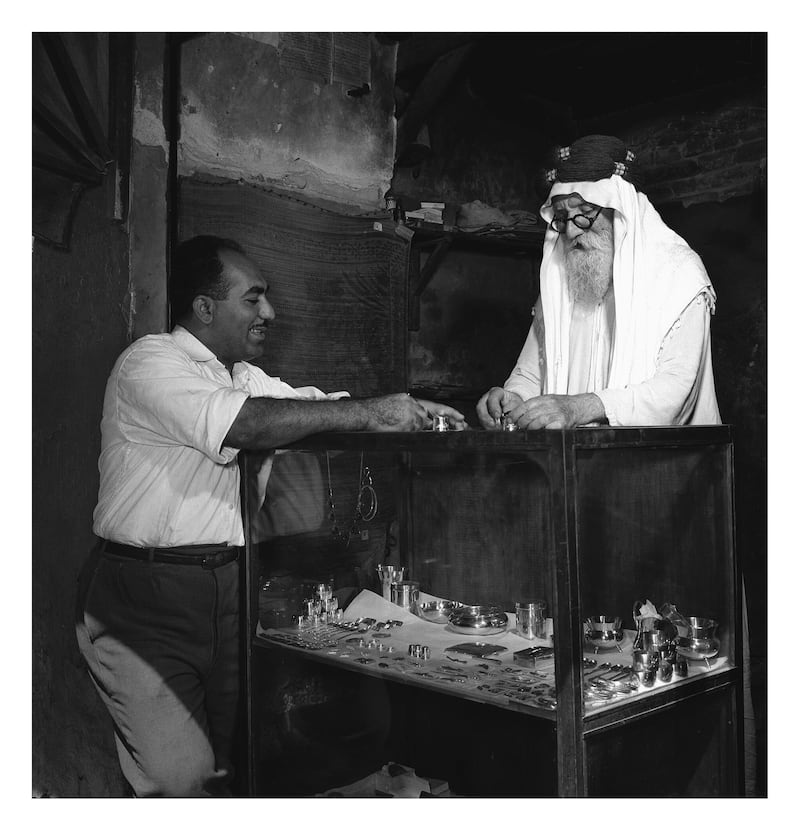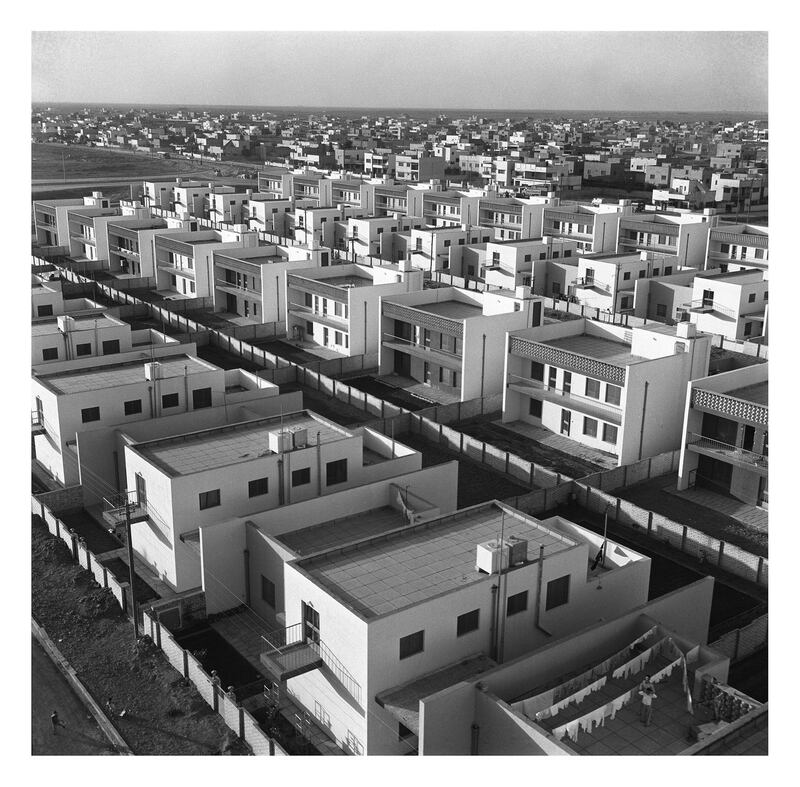In 1965, the photographer Latif Al Ani captured an American couple's visit to the Sassanian-era ruins of ancient Ctesiphon, 20 miles southeast of Baghdad, in a tableau that might be described as Texas on the Tigris.
Standing in the bright sunlight with their backs to the enormous catenary vault of Ctesiphon’s throne room, the Taq Kisra, the pair listen to an elderly Bedouin man as he sits on the ground, playing a rabab.
The couple have made little or no effort to blend with their environment. The woman wears a demur shirt dress and a neat pair of polished shoes, seemingly oblivious to the climate, while the formally-dressed man in sunglasses, his tie undone, holds the couple’s jackets away from his body, trying not to sweat.
One of about 200 images assembled for the first monograph dedicated to the photographer's three-decade-long career, Latif Al Ani, the hallucinatory strangeness of the image perfectly encapsulates Al Ani's key concerns: the pace and extent of Iraq's modernisation, the fate of its heritage and the contrast between the present and the past.
“The fear that I had is what we are living today. It started with the revolution of 1958. This past is being deleted. It has been deleted. I felt there would be no stability,” the photographer told the Iraqi historian Tamara Chalabi in an interview that’s included in the book.
“Newcomers came [and] Pandora’s box was opened and ignorant people came to rule, who had no culture or understanding of the power they held,” he added.
“Fear was a major motive to document everything as it was. I did all that I could to document, to safeguard that time.”
Last week at Les Rencontres d'Arles, the international photographic event held annually in the Provençal town made famous by Van Gogh, Latif Al Ani was selected as the winner of the event's 2017 Historical Book Award from a shortlist of 15.
The co-founder and chairwoman of the Ruya Foundation for Contemporary Culture in Iraq, Chalabi attended the award and described the book's selection from the shortlist as a "testament to Latif Al Ani's lens and the dedicated work he produced for so many years before being overtaken by obscurity, until we were able to bring him to attention again."
Born in 1932, Al Ani discovered his passion for photography in the studio of a Jewish photographer in the heart of Baghdad’s book selling district, Al Mutanabbi Street.
“He taught me how to use an instant camera and gave me a few tips. My brother bought me my first camera when he saw how interested I was in it. It cost around one-and-a-half Iraqi dinars,” the photographer remembered in 2015.
"This was in 1947. It was a Kodak box and it never left my side. My first photos were of life: palms, plants, faces, people on rooftops."
In 1954, Al Ani joined the staff of the Iraq Petroleum Company's Arabic-language magazine, Ahl al-Naft (People of Oil) where he effectively became the apprentice of a British photographer, Jack Percival, whom the 85-year-old Iraqi still regards as a mentor.
“Jack Percival hired me. I learned everything there. He was my boss, my teacher, and my spiritual father,” Al Ani told Chalabi.
“[He] wanted to teach me all he knew. One day we were in his office and he had a thick photography manual. He told me, ‘Latif, I won’t leave Iraq before teaching you everything in this book.’”
From 1954 until the eve of the Iraq-Iran war in 1980, Al Ani chronicled life in the rapidly modernising Iraqi republic, a period now remembered nostalgically by some as a cosmopolitan time when an independent Iraq, fuelled by oil revenues, briefly became a place that looked to the future with optimism and ambition.
Between 1954 and 1960, Al Ani's pictures featured in Ahl al-Naft and its sister publication, the English language Iraq Petroleum and it was during this time that he embarked on a series of aerial assignments, recording the infrastructure projects that were designed to modernise Iraq.
In 1960 however, things changed when Al Ani left the IPC to found the photography department of the Iraqi ministry of information.
As the architect and historian Mona Damluji wrote at the time of the monograph’s publication, the move coincided with a shift in perspective as Al Ani abandoned the omniscient, birds-eye-view favoured by Iraq’s planners and the IPC in favour of the street-level, reportage approach that was to define his later work.
Despite the fact that Al Ani had exhibited internationally, he effectively disappeared from the photographic record following his forced retirement in 1977, a situation that was only rectified in 2015 when he was invited to take part in the Iraqi national pavilion, Invisible Beauty, at the 56th Venice Biennale.
Al Ani’s participation not only reintroduced the photographer’s work to a wider public but also prompted the preparation of the current book by Chalabi and Morad Montazami, curator for the Middle East and North Africa at Tate Modern, who has written the text. “This is an important recognition of the work that we have been doing as a foundation, dedicated to promoting a rich and fragile culture in a fragile land and time,” said Chalabi following the announcement of the book’s success in Arles.
Beyond the beauty of their composition and technical excellence, part of the appeal of Al Ani’s photographs lies in their contrast with the torrent of images from Iraq that have been filed over the last decade, a country ruined by warfare and riven by sectarianism.
But if the portrait Al Ani’s images paint is of a proud and forward-looking nation, they do so because Al Ani was always an official photographer who looked for beauty in daily life.
“These images only bring us into the city as far as the oil company and state would want us to see; and so, the darker side of development remains hidden from view,” Damluji argues, echoing Al Ani’s own comments about his work.
“I don’t think I can photograph anything today. There is nothing beautiful. Beauty is not just about a view; it’s also about dealing with people on the street,” the cameraman told Tamara Chalabi, reminiscing about the Iraq of his youth.
“I lived there, I grew up there, and I loved it very much,” he said. “All of it has been devastated, and most of it has vanished.”
Latif Al Ani, with texts by Morad Montazami and Tamara Chalabi, is published by Hatje Cantz (2017)
